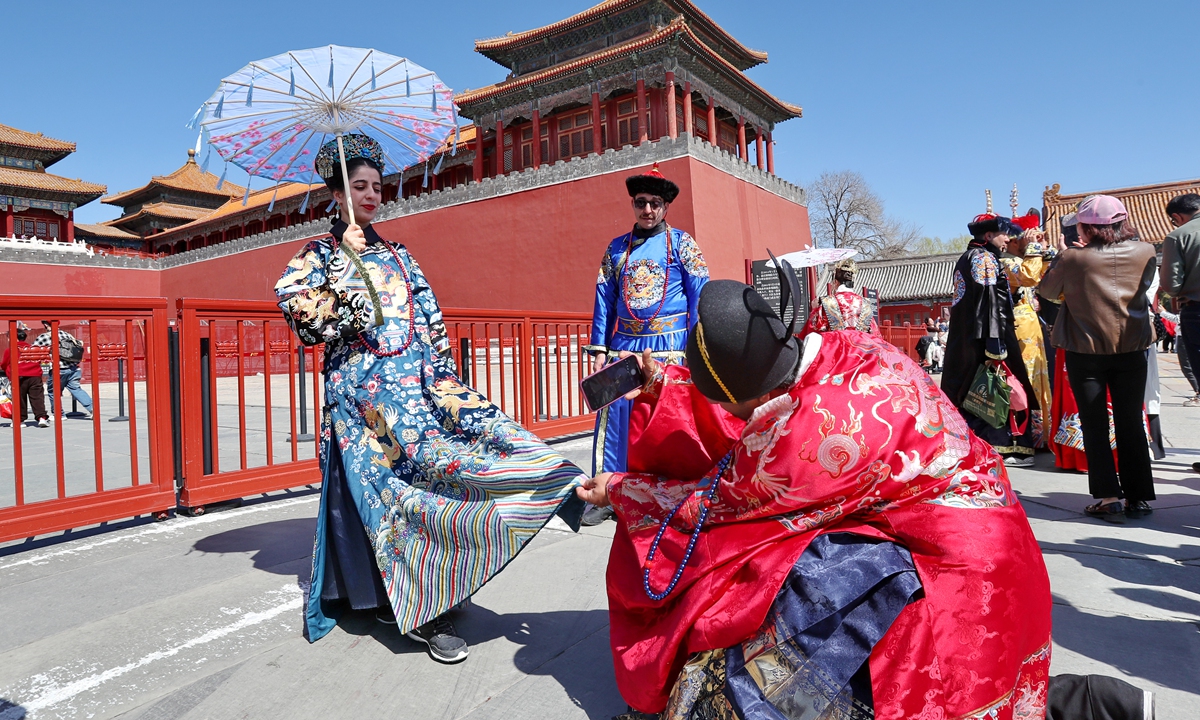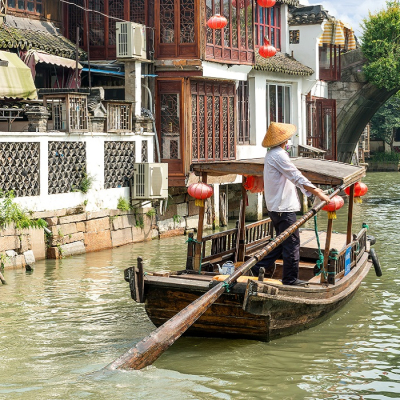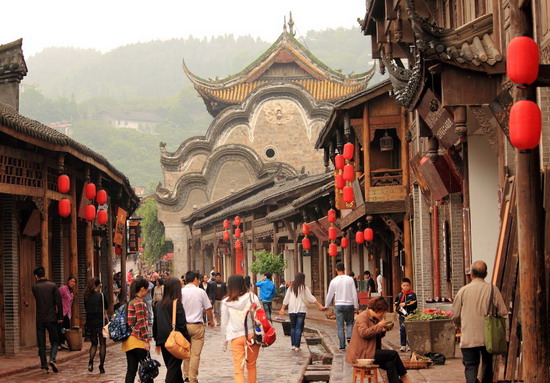The Ultimate Guide to Chinese Culture Travel and Heritage
As I stood atop the ancient walls of Xi’an, the sun setting over the terracotta horizon, I felt a profound connection to the millennia of history unfolding beneath me. This is the magic of chinese culture travel – a journey that transcends time, weaving together the threads of China’s rich heritage with the vibrant pulse of its present. At Jusha Travel (jusha.travel), we’re passionate about inspiring foreign travelers like you to explore these depths. Whether you’re a first-time visitor marveling at the Forbidden City’s grandeur or an older traveler rediscovering the serenity of sacred temples, chinese culture travel offers endless inspiration.
In this guide, we’ll embark on a reflective narrative through China’s cultural tapestry, from its diverse roots to must-visit heritage sites and living traditions. With post-2025 visa booms making entry easier for older travelers – think streamlined applications and extended stays – it’s the perfect time to plan your odyssey. Imagine sipping tea along ancient routes, wandering through china ancient towns, or witnessing china festivals 2025 in full bloom. We’ll blend practical tips with inspirational stories, drawing from my own mixed experiences as both a wide-eyed first-timer and a seasoned explorer in my later years.
China’s heritage isn’t just about relics; it’s alive in every festival drumbeat and temple whisper. As we delve deeper, you’ll discover how technology enhances these experiences, like AI-guided tours at china sacred sites. But let’s start with the essentials: understanding the diversity that makes chinese culture travel so captivating. By the end, you’ll be ready to craft your own story, perhaps starting at Luoyang White Horse Temple or tracing china tea routes.

Caption: The Great Wall, a timeless symbol in chinese culture travel, invites reflection on China’s enduring legacy.
This introduction alone sparks the reflective tone we’ll carry throughout, encouraging you to pause and ponder. With over 50 UNESCO World Heritage Sites, China beckons. Stick with us as we narrate your potential path, incorporating emerging trends like sustainable explorations post-visa reforms.
Table of Contents
- Exploring the Roots: Understanding Chinese Culture and Its Diversity
- Must-Visit Heritage Sites: Ancient Wonders and UNESCO Treasures
- Traditional Festivals and Customs: Where to Experience Authentic Culture
- Food and Drink: Delving Into China’s Culinary Heritage
- Living Heritage: Arts, Handicrafts, and Local Life
- Planning Your Cultural Odyssey: Practical Travel Advice and Top Itineraries
- Frequently Asked Questions
Exploring the Roots: Understanding Chinese Culture and Its Diversity
My first encounter with chinese culture travel began in a bustling Beijing market, where the air hummed with vendors calling out in Mandarin, their stalls overflowing with jade carvings and silk scarves. As a first-time visitor, I was overwhelmed yet enchanted by the sheer diversity – a melting pot shaped by over 3,000 years of history and 56 ethnic groups. Each group adds its unique flavor, from the nomadic traditions of Inner Mongolia to the colorful festivals of Yunnan. This richness is what makes chinese culture travel so profoundly reflective, inviting us to contemplate our place in a vast historical narrative.
For older travelers, the post-2025 visa booms have opened doors wider than ever. With simplified processes allowing longer stays – up to 180 days for cultural immersion – it’s easier to delve deep without the rush. Imagine tracing the philosophical roots of Confucianism, Taoism, and Buddhism, philosophies that still influence daily life. In my later years, I’ve found solace in these teachings, wandering through temples where incense curls like ancient whispers.
Regional variations amplify this diversity. In the northwest, Xinjiang’s Uyghur heritage blends Islamic influences with Silk Road lore, while Tibet’s high plateaus offer spiritual retreats at china sacred sites. As a first-timer, I marveled at how Han dominance coexists with minority customs, creating a cultural mosaic. Technology enhances this: apps now translate dialects in real-time, bridging gaps for reflective journeys.
Let’s reflect on a key aspect – the ethnic tapestry. The Miao people’s intricate silver jewelry and embroidery tell stories of resilience, much like the Dong’s wooden drum towers echoing communal bonds. In china ancient towns like Lijiang, these elements converge, offering immersive stays in traditional guesthouses. Post-2025, older travelers can leverage group tours tailored for comfort, combining cultural depth with accessible transport.
| Ethnic Group | Region | Notable Contributions |
|---|---|---|
| Han | Central and Eastern China | Calligraphy, Confucian philosophy, major festivals |
| Uyghur | Xinjiang | Silk Road markets, music, and dance |
| Tibetan | Tibet | Buddhist rituals, thangka paintings |
| Miao | Guizhou | Embroidery, silverwork, lushan festivals |
This table highlights just a fraction, but it underscores the inspirational layers awaiting in chinese culture travel. For more on heritage exploration, check our chinese culture heritage guide at Jusha Travel.

Caption: Vibrant ethnic attire during a festival, embodying the diversity of chinese culture travel.
As we continue this narrative, remember: chinese culture travel isn’t just sightseeing; it’s a reflective dialogue with history, especially potent amid post-2025 visa facilitations for older explorers seeking meaningful connections.
Must-Visit Heritage Sites: Ancient Wonders and UNESCO Treasures
Stepping into the Forbidden City felt like entering a living storybook, its red walls and golden roofs narrating tales of emperors and intrigue. As a first-time visitor, the scale overwhelmed me – 980 buildings spanning 180 acres, a testament to Ming and Qing dynasties. For older travelers, the post-2025 visa booms mean extended time to explore without fatigue, perhaps with guided electric cart tours. This UNESCO gem is a cornerstone of chinese culture travel, inviting reflection on imperial power and artistry.
Venturing further, the Great Wall unfolded like a dragon across misty hills. I hiked sections near Beijing, pondering the laborers who built this 13,000-mile marvel over centuries. It’s not just a wall; it’s a symbol of resilience, perfect for inspirational walks. In my older years, I’ve appreciated less-crowded spots like Mutianyu, accessible via cable cars, aligning with visa-driven trends for comfortable heritage travel.
Then there’s the Terracotta Army in Xi’an – thousands of life-size warriors guarding Emperor Qin Shi Huang’s tomb. Discovered in 1974, it’s a window into ancient military prowess. As a first-timer, I was awestruck; now, reflecting back, it evokes thoughts on mortality and legacy. Nearby, Luoyang White Horse Temple, China’s first Buddhist temple, offers serene gardens for contemplation, one of many china sacred sites blending spirituality with history.
Don’t miss the Mogao Caves in Dunhuang, along the Silk Road. These 492 grottoes house murals spanning 1,000 years, a narrative of cultural exchange. For older travelers, post-2025 visa extensions allow slow-paced visits, perhaps combining with nearby china ancient towns like Jiayuguan. Shaolin Temple in Henan adds martial arts heritage, with Zen practices that inspire inner peace.
In Xinjiang, Kashgar Old City mazes through two millennia of Uyghur life, a vibrant hub for chinese culture travel. Its markets pulse with stories of traders and traditions. To dive deeper into these wonders, explore this credible source on historical places in China.
| Site | Location | Why Visit |
|---|---|---|
| Great Wall | Northern China | Iconic fortification for reflective hikes |
| Forbidden City | Beijing | Imperial architecture and history |
| Terracotta Army | Xi’an | Ancient warriors and tomb insights |
| Mogao Caves | Dunhuang | Silk Road murals and Buddhist art |
| Shaolin Temple | Henan | Martial arts and Zen heritage |
For comprehensive planning, link to our ultimate chinese culture and heritage guide.
Traditional Festivals and Customs: Where to Experience Authentic Culture
The roar of fireworks during Chinese New Year enveloped me in Shanghai, families reuniting under red lanterns. As a first-time visitor, the energy was exhilarating; later, it became a reflective ritual of renewal. This Spring Festival, with lion dances and feasts, embodies family and prosperity – ideal for chinese culture travel. Post-2025 visa booms let older travelers time visits around these events, extending stays for full immersion.
Mid-Autumn Festival brought moonlit poetry in Hangzhou, sharing mooncakes by West Lake. It’s a custom of unity, perfect for contemplative evenings. In china ancient towns like Suzhou, lantern displays illuminate waterways, weaving folklore into the night. For 2025, expect AI-enhanced festivals with virtual reality recreations, trending among visa-facilitated older groups seeking tech-blended traditions.
Dragon Boat Festival races along the Yangtze captivated me with zongzi dumplings and rhythmic paddles. It’s a homage to poet Qu Yuan, alive in customs from Hunan to Guangdong. Ethnic festivals in Yunnan or Guizhou add diversity – think Miao torch festivals or Tibetan Losar. China festivals 2025 will boom with easier access, inspiring reflective participation.
Customs like ancestor worship at Qingming Festival offer profound insights, especially at china sacred sites. In Luoyang White Horse Temple, rituals blend Buddhism with local lore, a narrative of spiritual continuity.
| Festival | Date (Approximate) | Customs and Locations |
|---|---|---|
| Chinese New Year | January/February | Fireworks, family reunions in Beijing |
| Mid-Autumn | September | Mooncakes, lanterns in Hangzhou |
| Dragon Boat | June | Races, zongzi in Yangtze regions |
| Qingming | April | Ancestor worship at temples |
Explore more in our chinese culture heritage guide.

Caption: Canals of Zhujiajiao, a hub for traditional customs in chinese culture travel.
Food and Drink: Delving Into China’s Culinary Heritage
Savoring Peking Duck in a Beijing courtyard, the crispy skin and tender meat told a story of imperial banquets. As a first-timer, it was a sensory awakening; now, it reflects on culinary evolution. Chinese cuisine’s eight traditions – from spicy Sichuan to delicate Cantonese – are heritage in edible form, integral to chinese culture travel.
In Chengdu, hotpot bubbled with chili and numbing pepper, a communal ritual fostering bonds. For older travelers, post-2025 visas enable extended food tours, sampling without haste. Dim sum in Guangzhou, with steamed buns symbolizing prosperity, adds layers of meaning.
Tracing china tea routes in Zhejiang, I picked Longjing leaves, participating in ceremonies that embody harmony. Pu’er from Yunnan offers fermented depths, while oolong ties to Fujian customs. These routes, winding through china ancient towns, narrate trade histories.
Street foods in Shanghai’s Chenghuang Temple area, like xiaolongbao, blend innovation with tradition. Reflective meals at china sacred sites, such as vegetarian Buddhist fare at Luoyang White Horse Temple, inspire mindfulness.
| Tradition | Region | Signature Dishes |
|---|---|---|
| Sichuan | Southwest | Hotpot, mapo tofu |
| Cantonese | South | Dim sum, roast goose |
| Shandong | East | Seafood banquets |
| Hunan | Central | Spicy steamed fish |
For heritage insights, visit this guide on Chinese culture.
Living Heritage: Arts, Handicrafts, and Local Life
Brush in hand, I attempted calligraphy in a Suzhou studio, each stroke a meditation on balance. As a first-timer, it was humbling; later, inspirational for its philosophical depth. Chinese arts like painting and opera are living narratives, preserved in workshops across china ancient towns.
Silk weaving in Hangzhou wove threads of history, techniques unchanged for centuries. In Kashgar, Uyghur artisans dyed fabrics in bazaars, a vibrant slice of Silk Road life. Martial arts at Shaolin Temple, with Kung Fu demos, embody discipline – perfect for reflective practice.
Local life in Guizhou villages involved folk music sessions, connecting to Dong heritage. Post-2025 visa booms facilitate homestays for older travelers, blending comfort with authenticity at china sacred sites.

Caption: Artisans at work, preserving living heritage in chinese culture travel.
Link to our related china culture guide for more.
Planning Your Cultural Odyssey: Practical Travel Advice and Top Itineraries
Crafting my itinerary started with Beijing’s hutongs, evolving into a three-week saga. As a first-timer, I prioritized icons; now, I weave in rest days for reflection. Post-2025 visas simplify this for older travelers, with e-visas and health exemptions.
A sample path: Beijing for Forbidden City, Xi’an for Terracotta, Chengdu for pandas and tea, then Yunnan for ethnic villages. Include china tea routes and festivals 2025. Respect customs – modest dress at temples, basic phrases.
| Week | Locations | Highlights |
|---|---|---|
| 1 | Beijing | Great Wall, Forbidden City |
| 2 | Xi’an, Luoyang | Terracotta, White Horse Temple |
| 3 | Chengdu, Yunnan | Tea routes, ethnic festivals |
For detailed planning, see cultural heritage sites guide and our chinese culture heritage guide.
Frequently Asked Questions
What is the best time for chinese culture travel in 2025?
Spring (March-May) and autumn (September-November) offer mild weather for exploring heritage sites. Align with china festivals 2025 like Dragon Boat for immersive experiences. Post-2025 visa booms make off-peak travel ideal for older visitors, avoiding crowds. (75 words)
How do post-2025 visa changes affect older travelers in chinese culture travel?
Extended stays up to 180 days and simplified applications ease access. Focus on health waivers and cultural tour visas, perfect for reflective journeys to china sacred sites. First-timers benefit from group options. (60 words)
What are must-see china sacred sites for chinese culture travel?
Luoyang White Horse Temple, Shaolin, and Mogao Caves top the list. These offer spiritual depth, with post-2025 trends including AI tours for accessibility. (50 words)
How to explore china tea routes authentically?
Visit Zhejiang for Longjing picking or Yunnan for Pu’er. Join ceremonies in china ancient towns, blending history with modern sustainability. (55 words)
What china festivals 2025 should first-time visitors attend?
Chinese New Year and Mid-Autumn for vibrant customs. In ethnic areas, torch festivals provide unique insights, enhanced by visa facilitations. (52 words)
Are china ancient towns suitable for older travelers?
Yes, places like Lijiang offer gentle walks and guesthouses. Post-2025 booms include accessible transport, making reflective exploration seamless. (58 words)
How does technology enhance chinese culture travel?
AI apps translate and guide at sites, while VR recreates festivals. It’s trending for 2025, aiding older travelers in immersive, low-effort experiences. (62 words)
In wrapping up this narrative of chinese culture travel, we’ve journeyed from diverse roots to living arts, each step a reflection on China’s timeless allure. As a first-time visitor, the wonders sparked curiosity; as an older traveler amid post-2025 visa booms, they offer profound peace. At Jusha Travel (jusha.travel), we encourage you to weave your own story – perhaps starting with Luoyang White Horse Temple or china tea routes. These experiences aren’t just trips; they’re inspirational legacies that connect us to humanity’s shared heritage.
Remember the Great Wall’s enduring stones, the festivals’ joyful rhythms, and the tea’s soothing warmth. With easier visas, older explorers can savor slow-paced immersions in china ancient towns and sacred sites. Trends like sustainable travel and tech integrations ensure 2025 is transformative. We’ve shared tables, stories, and tips to inspire your path.
Whether tracing Silk Road echoes or joining china festivals 2025, let this guide be your companion. For more, explore our pillar content on the ultimate guide to chinese culture and heritage. Now, it’s your turn to reflect and embark.

Caption: Horizon views inspiring the end of your chinese culture travel journey.
Comment your top picks and why!

